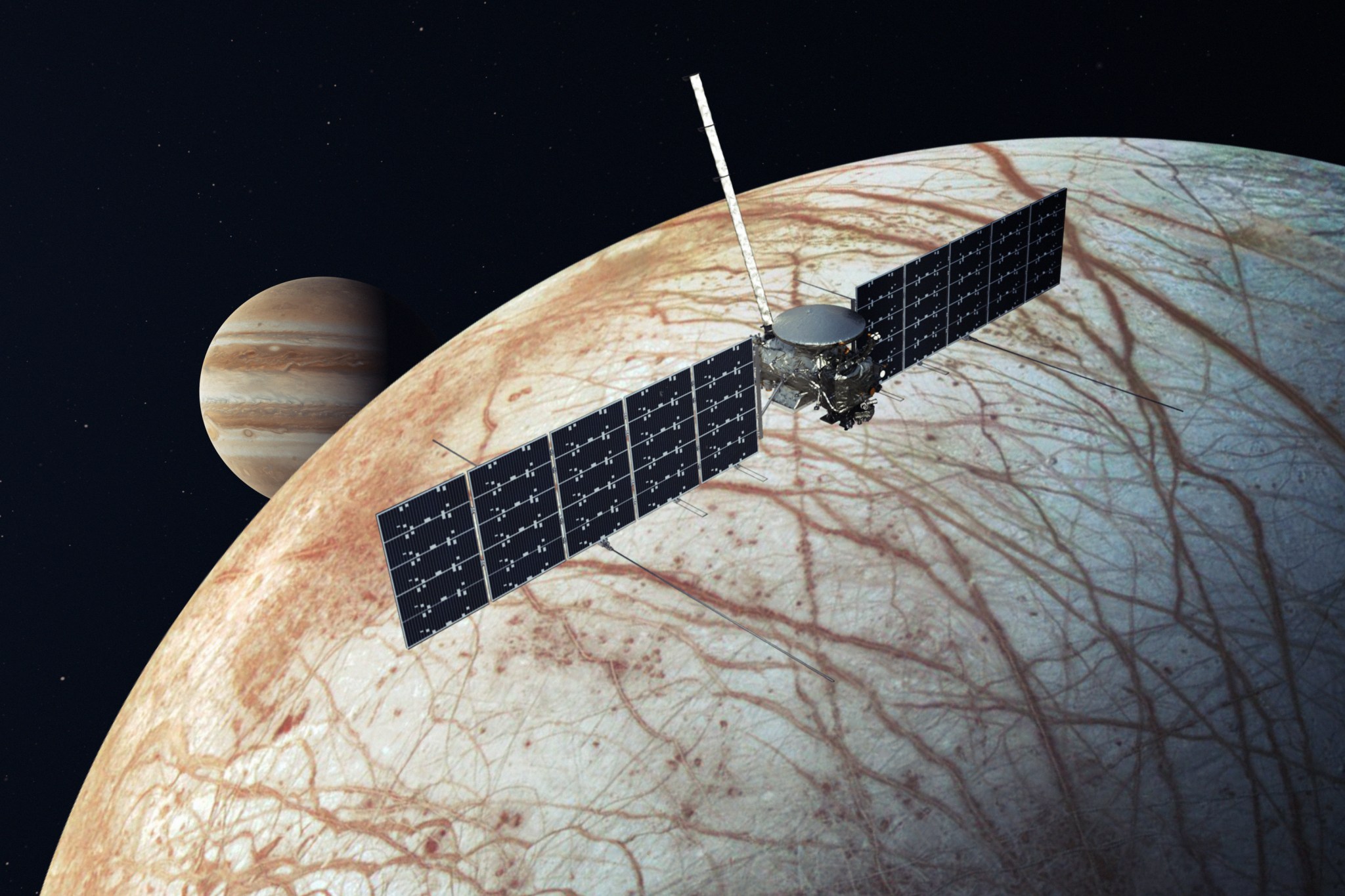4 min read
NASA has selected 40 undergraduate students for the first year of its Europa ICONS (Inspiring Clipper: Opportunities for Next-generation Scientists) internship program, supporting the agency's Europa Clipper mission. Europa ICONS matches students with mentors from the mission's science team for a 10-week program to conduct original scientific research on topics related to the mission to Jupiter's moon Europa.

The program is planned to run every year until Europa Clipper completes its prime mission in 2034 and is open to applications from all U.S. undergraduate STEM majors, with preference given to students from non-high research activity universities and underserved institutions.
ICONS internships may be in-person at the mentor's institution, virtual, or hybrid, depending on the research project and needs of the mentor and intern. As part of the program, students and mentors will convene for a two-day meeting at NASA's Jet Propulsion Laboratory (JPL) in Southern California. The first Europa ICONS internship will run Monday, June 3 through Friday, Aug. 9.
The students selected for the Europa ICONS program in 2024 are:
Sarah Ruetschle, John Carroll University in University Heights, Ohio
Cole Anderson, University of California, Santa Cruz
Hamza Ouriour, Wentworth Institute of Technology in Boston
Ethan Piacenti, Olivet Nazarene University in Bourbonnais, Illinois
Jared Bouck, Northern Arizona University in Flagstaff, Arizona
Kayla Blair, Northern Arizona University
Carly Davis, McNeese State University in Lake Charles, Louisiana
Matthew Perkins, Red Rocks Community College in Lakewood, Colorado
Angela Zhang, Cornell University in Ithaca, New York
Arianna Rodriguez Ortiz, University of Puerto Rico-Mayaguez
Beverly Malugin Ayala, University of Puerto Rico-Mayaguez
Jeansel Johnson-Ayala, University of Puerto Rico-Rio Piedras
Akemi Takeuchi, University of Maryland, College Park
Sofia Merchant-Dest, University of Maryland-University College in Adelphi
Gradon Robbins, University of Florida in Gainesville
Jason Sioeng, California State Polytechnic University, Pomona
Tyler Yuen, San Jose State University in San Jose, California
Dallin Nelson, Southern Utah University in Cedar City
Eric Stinemetz, University of Houston-Downtown
Lucas Nerbonne, Middlebury College in Middlebury, Vermont
Hope Jerris, Middlebury College
Jacob Dietrich, Indiana University, Southeast in New Albany
Jocelyn Mateo, Lorain County Community College in Elyria, Ohio
Samuel Brown, San Diego Mesa College in San Diego
Madison Stanford, Loyola Marymount University in Los Angeles
Bryce McGimsey, Solano Community College in Fairfield, California
Noah Alayon, CUNY LaGuardia Community College in Queens, New York
Trevor Erwin, University of Texas at Austin
Ava Frost, Mount Holyoke College in South Hadley, Massachusetts
Brianna Casey, Rensselaer Polytechnic Institute in Troy, New York
Fatima Mendoza, Texas Tech University in Lubbock
Daniel Voyles, Harvey Mudd College in Claremont, California
Swaroop Sathyanarayanan, Georgia Institute of Technology in Atlanta
Jay Patel, Louisiana State University College of Engineering in Baton Rouge
Juliane Keiper, Amherst College in Amherst, Massachusetts
Emory Long, Florida Agricultural and Mechanical University in Tallahassee
Scott Chang, University of Wisconsin-Madison
Hayden Ferrell, Arizona State University in Tempe
Isabella Musto, Denison University in Granville, Ohio
Elizabeth Kirby, College of Charleston in Charleston, South Carolina
The Europa Clipper mission's three main science objectives are to determine the thickness of the moon's icy shell and its surface interactions with the ocean below, to investigate its composition, and to characterize its geology. The mission's detailed exploration of Europa will help scientists better understand the astrobiological potential for habitable worlds beyond our planet.
The Europa ICONS program is managed by the Planetary Science Division within NASA's Science Mission Directorate in Washington and is part of a larger effort known as Clipper Next Gen, a decade-long strategy using the Europa Clipper mission to train and diversify the next generation of planetary scientists.
Managed by Caltech in Pasadena, California, JPL leads the development of the Europa Clipper mission in partnership with the Johns Hopkins Applied Physics Laboratory (APL) in Laurel, Maryland, for NASA's Science Mission Directorate in Washington. APL designed the main spacecraft body in collaboration with JPL and NASA's Goddard Space Flight Center in Greenbelt, Maryland. The Planetary Missions Program Office at NASA's Marshall Space Flight Center in Huntsville, Alabama, executes program management of the Europa Clipper mission.






